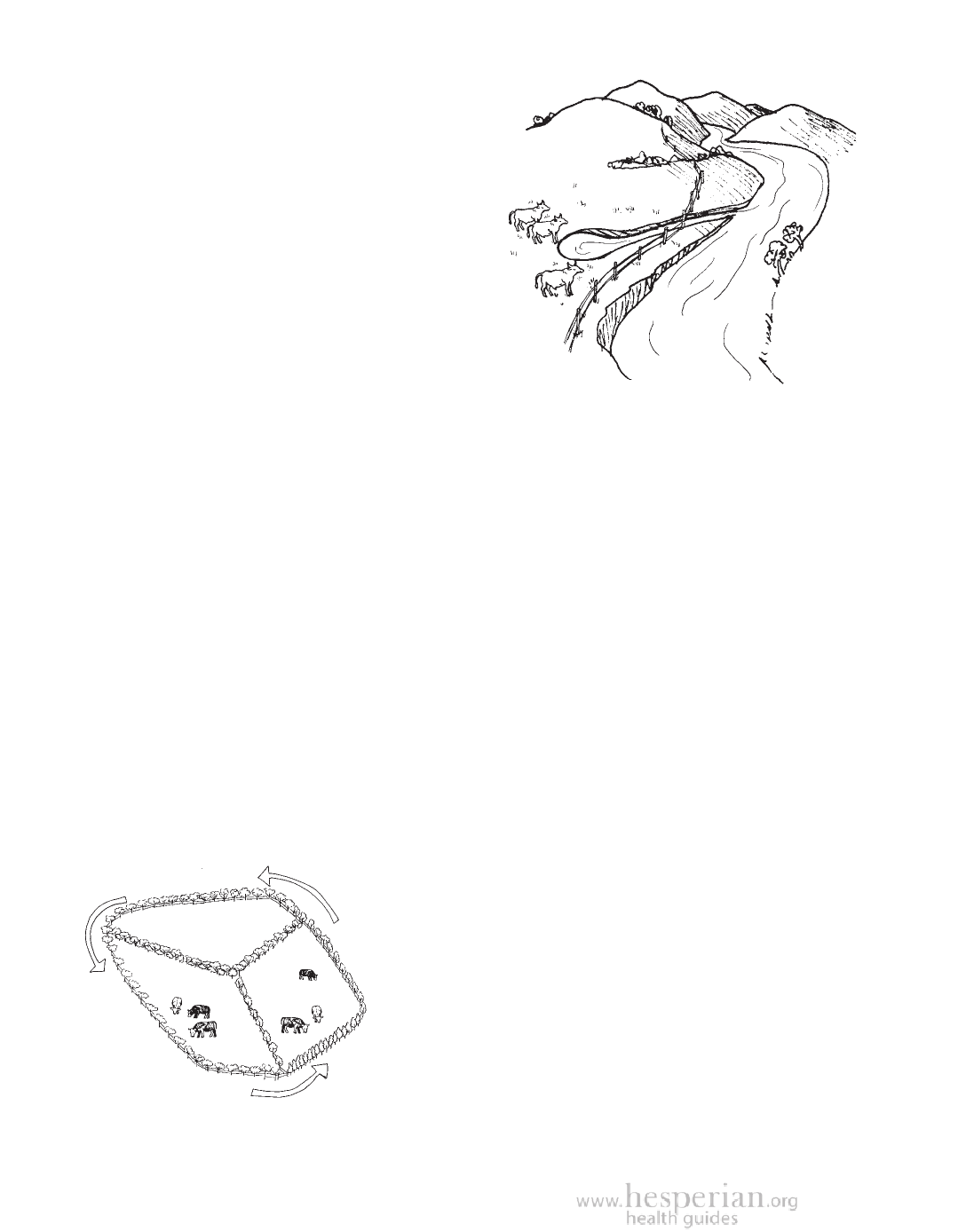
308 Sustainable Farming
Move animals from pasture to pasture
If you let your animals graze wherever
they want, they will eat the grasses
down to the roots. Next year, those
plants will not grow back well. Move
grazing animals between pastures
when half the leaves of grazing plants
are eaten.
If you can make fences, divide your
grazing land into small pastures according
to the type of plants that grow there. Move the
animals between the different areas. If you
graze cattle, even low stone walls will keep
them from moving between pastures. If you
herd your animals, you do not need fences.
Make a watering hole instead
of letting animals graze next to
streams or ponds.
Take care that livestock do not graze in and around water sources used by
people. If manure gets into water people drink, or where they bathe, swim, or
fish, disease can spread. Make a ditch from the stream to a watering hole for
your animals.
How often to move animals
How much time animals stay in one pasture before they are moved depends on
the number of animals, and the size and quality of the pasture. Each year, let
one part of the grazing land rest completely, with no grazing at all. This will
prevent soil from being compacted and allow grasses to grow back.
For example, if you divide the land into 3 or more pastures, move the
animals through all but one of the pastures. Leave that one to rest. The
following year, let a different pasture rest. Or, after each harvest, let your herd
eat the crop stalks, weeds, and grains that fall on the ground. They will clean
up the field and spread their manure.
Rotational grazing
system
No grazing
for 1 year
Graze
after grass
seed ripens
Full
grazing
How many animals can your land support?
Animals provide security when times are
hard because people can sell or eat them.
They also bring respect. But when people try
to earn more respect and security by having
more animals than the land can support,
both the animals and the land become
unhealthy. The amount of land needed for
animals depends on how green and wet the
area is. In dry lands, much more land is
needed for grazing than in very green areas.
A Community Guide to Environmental Health 2012